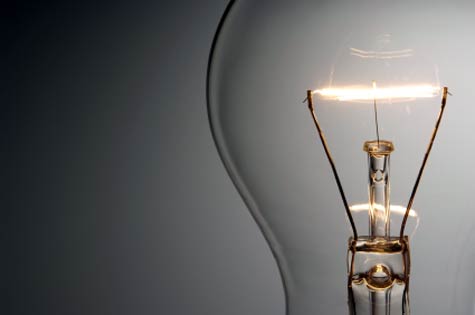I’m at CES 2015 this week and there is actually a surprising amount if IT stuff being presented at the show. I’ll talk about that in my next post, but today I want to start with my impressions of what undeniably was the best vendor keynote at CES I’ve ever seen, and I’ve seen a lot of keynotes, with the high bar generally sitting with Bill Gates and some of the work he did early on. But Gates largely traded on the fact that he was a technology god to many of us and we hung on every word.
Brian Krzanich, Intel’s new CEO, set the new high bar at CES this year. Since his example could be used in a number of venues and since many of the big IT shows are also in Las Vegas, I thought sharing my impressions of how to do this right would be interesting.
Public Speaking Background
At one time, I was ranked as one of the top three competitive speakers in the nation, and I’ve been asked to critique and help with events on and off for several decades. Most vendor talks are slammed together at the last minute, poorly rehearsed (some CEOs refuse to rehearse), and often seem more focused on assuring that the speaker gets through the process than on really conveying a message. What’s more, the idea of entertainment is foreign to the firms. This is most problematic in venues like Las Vegas, where there are massive distractions and people often don’t get much sleep. They also can see truly entertaining shows at this venue and the contrast with the crap that is often on the stage at CES is especially painful to watch. In one example this year, a major vendor basically got up and showed ads for most of the keynote. I’ve seen CEOs turn over their keynote to customers, who then talk about their agenda, or do talks with zero content. Actually, come to think of it, that was the same CEO.
At CES, these folks are presenting to a broad cross section of their existing and potential future customers, along with their employees and, increasingly, even their families can watch the talks streamed live. By not stepping up, these CEOs embarrass their families and showcase personal disrespect for their employees, companies and brands. Steve Jobs and Bill Gates both seemed to get this and always seemed to bring their respective A game; Jobs in particular had a damn good A game. Well, it turns out that Krzanich has a damned good A game, as well.
Intel at CES
The open for the keynote was done by an excellent cellist who used twin Intel-based laptops to do a music loop. This allows a single musician to play a piece that would typically require far more people; the musician records what they play, then plays it back and provides accompaniment, repeating this cycle until they nearly sound like an orchestra. They had a strong dance team on stage, as well, and all of this was being filmed by the new Dell Venue 8 7000 tablet with Intel’s new RealSense camera and special effects added real time. This was all incredibly entertaining (she played very popular older rock tunes).
The talk itself was based around a future vision tied to Intel technology and broken up into short increments with mostly live demonstrations. The only exception was the HP 3D printer which, on paper, may be the only 3D printer that can print things you could use as a product (most 3D printers use materials that are very weak and can’t take paint). The only issue is that this printer, which isn’t due to market until next year, didn’t work on stage. The things that did work were impressive, though, starting with that opening sequence, which showcased that Intel-powered tablet by Dell (awarded most innovative of the show by CES). This was followed by two drone types. The first was a full-sized autonomous drone. You just had to tell this drone the location of where you wanted it to go and it would fly around any obstructions automatically. They first showed a film of it navigating a forest and then unveiled a massive obstacle course and had the drone navigate it live. The second drone, from one of Intel’s incubation efforts, could be worn on your wrist. A user could throw it in front of them and it would spin and take a picture of them and/or their family, returning like a boomerang after.
Another compelling demo showcased the use of the RealSense cameras in a wearable configuration, which were used to help a vision-challenged Intel employee to lead a far more normal life. This was touching on several levels, both because it did clearly make a huge personal difference and because they used it to help one of their own employees first. He came on stage to talk about and demonstrate the technology.
Diversity in Technology
For many, the most important part came at the end, when Krzanich pledged hundreds of millions of dollars to increase the level of diversity in Intel and the technology industry at large and also pledged to help clean up issues in the gaming industry. I feel strongly about this and were I an Intel employee (sometimes I’m kind of considered an honorary ex-Intel employee), I would have, actually I did, feel incredibly proud of Krzanich’s apparently deep drive to fix this horrid problem. I have some issues with the execution, but no intelligent person could disagree that this needed fixing.
While pitching products is what this show is about, using the podium to make the world better for folks who are mistreated is a noble and worthy cause. It likely did wonders for Intel’s brand image as a result. There is something powerful about making your employees, customers and investors proud of their relationship with you. Michael Dell does this, Joe Tucci of EMC does this, and this is one of the things Eric Schmidt does better than Steve Jobs. I think more executives should follow their examples more often.
Wrapping Up: The Result for Krzanich
At this show, I’d watched other keynoters get pounded on twitter for doing bad work or watched the audience drift into email or fall asleep. But during this Intel presentation, everyone around me stayed engaged and many turned their phones into movie cameras so they could share what they saw with their friends and loved ones. While other events got polite applause at the end, Krzanich got roaring applause. I overheard many who were stunned by how good the entire execution was. This was clearly tightly choreographed, scripted and well-rehearsed, suggesting that there was at least one critical unsung hero who also should be recognized for excellence.
One thing I did notice is that Krzanich, like many speakers, struggled with putting prompters on the floor. Were it me, I’d likely look into seeing if there was a head-mounted display I could use instead. Remember that this is CES, as well. Krzanich, and especially the folks that put this together, deserve a standing ovation for excellence, and they should serve as an example to others of what can and should be done at a show like this.
Rob Enderle is President and Principal Analyst of the Enderle Group, a forward-looking emerging technology advisory firm. With over 30 years’ experience in emerging technologies, he has provided regional and global companies with guidance in how to better target customer needs; create new business opportunities; anticipate technology changes; select vendors and products; and present their products in the best possible light. Rob covers the technology industry broadly. Before founding the Enderle Group, Rob was the Senior Research Fellow for Forrester Research and the Giga Information Group, and held senior positions at IBM and ROLM. Follow Rob on Twitter @enderle, on Facebook and on Google+




